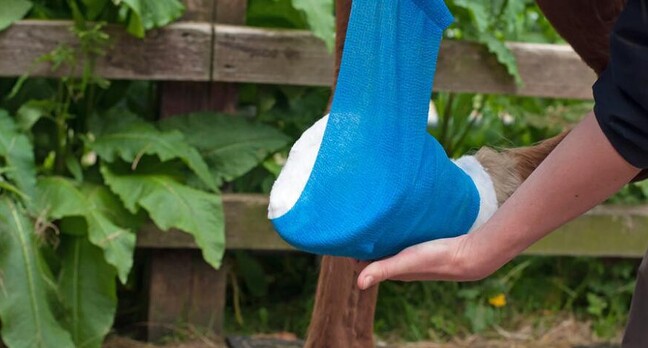While none of us really want to think about winter yet, the time of year for horse foot abscesses is drawing nearer. Proactive action surrounding hoof care and grazing management can help to prevent foot abscesses from becoming an issue over the autumn and winter months.
Prevention of Abscesses
The most important areas that aid in the prevention of abscesses are excellent hoof quality and foot care and the environment in which the foot lives. Many horses have shoes removed over the winter, but feet should still be regularly maintained with trimming to prevent long toes, stretched white lines and cracks developing that provide areas for bacteria to penetrate into the hoof capsule. Both cracks in the hoof and bruises in the sole can allow bacteria to invade the hoof capsule and form an accumulation of pus. The hoof cannot expand to relieve the pressure caused by the pus, resulting in severe lameness as is often seen with an abscess.
Hooves that are constantly exposed to a wet, moist environment are at higher risk of developing abscesses. Constantly wet feet compromises the hoof wall and gives more opportunity for bacterial invasion. Standing in mud mixed with manure in high thoroughfare areas also creates a perfect bacterial soup for not only foot abscesses but the other winter plague - mudfever. If there is possibility to stand horses off on a dry area during a period of the day or night, stabling overnight or providing dry areas beneath trees or hedges to allow the hoof and lower limb to dry out then this should be utilised.
Signs and symptoms of hoove issues
If your horse does develop a sudden onset, severe lameness then an abscess should be suspected. Keep an eye out for other signs such as increased digital pulses (ask your vet to show you where to feel for this), mild to moderate swelling of the lower limb, and heat in the foot. The key to treatment is for your vet or farrier to obtain drainage through the sole of the foot and then to keep the foot clean to prevent reformation of the abscess. Abscesses can also sometimes break out through the coronet band. Prior to this, there will often be a soft, painful area that can be felt on the coronet band.
Hoof abscess treatment
Poultices such as animalintex can be used to soften the hoof and aid in abscess release. Another alternative is regular soaking of the foot in warm water and epsom salts. It can sometimes take a few days for the abscess to burst, but drainage will give instant relief to the horse. It may be necessary to provide additional pain relief. Antibiotics are usually unnecessary for uncomplicated abscesses.
Did you know that horses can also get tetanus from a hoof abscess? The tetanus bacteria lives in the soil and is found in manure. It grows well in conditions with little oxygen, such as in a hoof abscess. Another good reason to make sure your horse is up to date with vaccines at this time of year. VetSouth Equine runs a discounted tetanus offer in conjunction with our winter dental special, so enquire about this when dentals are performed.
- Grace Reed

